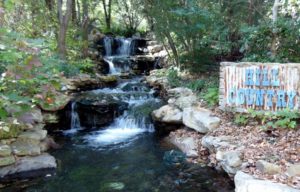
Overall Rating![]()
The Fort Worth Zoo opened in 1909 in Fort Worth, TX. The Zoo is 64 acres with approx. 7,000+ animals representing 542 species. This zoo features Native Texas species, habitats, and Texas ecosystems. The Zoo is an accredited member of the Association of Zoos and Aquariums and participates in the Species Survival Plan. The Fort Worth Zoo is home to 68 Endangered and Threatened Species. They also have MOLA-Museum of Living Art, Texas Town, and Texas Hall of Wonders.
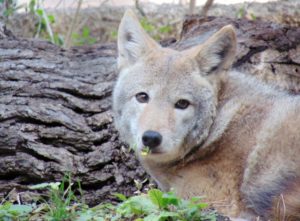
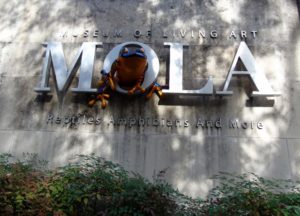
Fort Worth Zoo Website: www.fortworthzoo.org
Hours:
March 3 through July 1
Monday-Friday 10:00am-5:00pm
Saturday & Sunday 10:00am-6:00pm
July 2 through October 28
10:00am-5:00pm
For up to date operating hours Phone 1-817-759-7555
Holiday Hours
Thanksgiving Day 12:00pm-4:00pm
Christmas Day 12:00pm-4:00pm
New Year’s Day 10:00am-4:00pm
Dinning, Retail, and Attractions are closed during Holiday Hours.
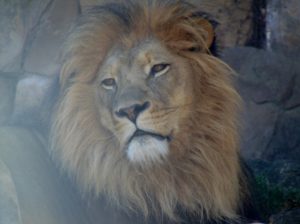
Ticket Pricing:
Adults (13+)-$16.00
Seniors (65+)-12.00
Kids (3-12)-$12.00
Kids 2 & under-Free
Parking:
$5.00 per vehicle
Pet Daycare:
No pet daycare available.
Service Animals are welcome.
With any extra service provided I would always call ahead for any information.
Restaurants:
There are 6 restaurants/concessions seasonally available.
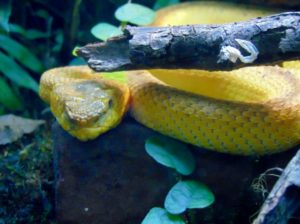
Animal Habitats![]()
Education![]()
Cultural Immersion![]()
Navigation![]()
Food Variety![]()
For more information on the ratings breakdown click here.
Our Zoo Experience
We have visited the Fort Worth Zoo 2 times. The 2nd visit we found the optimal way to go through the zoo. We didn’t have to back track much, and we didn’t miss a thing.
We got to the zoo at 10 am when they opened. The zoo is a full day zoo. We were done seeing everything by 4:30 pm.
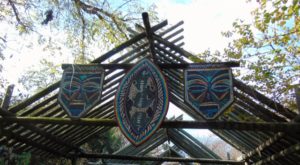
The zoos layout is very long, so prepare to do some walking. Once we go into the zoo we headed right towards the World of Primates.
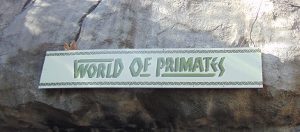
Fort Worth Zoo is unique, they have indoor and outdoor habitats and viewing for most all of their primates.
The first habitat and primate you see is the Western Lowland Gorillas. There was a baby gorilla playing near one of the window viewing areas. She was really cute and about the size of a toddler.
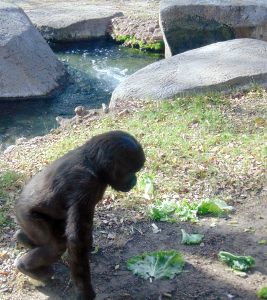
When you walk into the World of Primates building you are immediately drawn to the huge gorilla area. It has a massive tree and waterfalls in the center of the habitat.
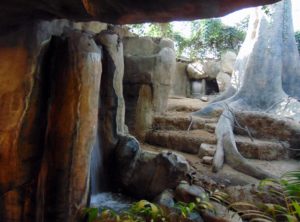
When you enter the building to your right is a viewing area for the Bonobos. This is the only zoo I can recall that has the species Bonobo.
On up the path are Colobus Monkeys, Mandrills, and Orangutans. The White-cheeked Gibbons didn’t have an indoor viewing area I could see.
After we were finished inside the World of Primates building we went outside and turned to the left. We stopped at the Bonobo outdoor habitat. The keepers were about to let them out for their morning foraging.
It was really interesting to see them send a scout out to survey their territory. The scout made sure it was safe for the rest of the troop.
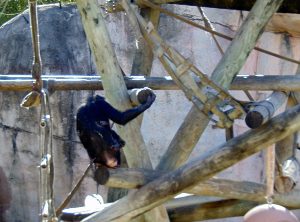
Once the scout announced it was safe, with a high pitched squeal, the rest of the troop came out to forage. They were all shrieking, squealing, and carrying on about what they found.
FYI tip: When watching Bonobos you may notice some adult behavior (XXX) happening. Bonobos do this often to resolve conflict or bond with one another.
Everyone participates no matter their gender or age. So be prepared you may be having “The Talk” sooner than you were hoping. They are lovers not fighters.
Across from the Bonobos is the Nile Lechwe habitat. These endangered Antelope had a wonderful habitat with water features, beautiful trees and plenty of space. This is the first time we have seen this species.
The White-cheeked Gibbons habitat is directly to the right of the Bonobos habitat. The Gibbons were watching the Bonobos every move. Then all of a sudden they started making noise. It started slow and then sounded like a siren was going off. The Gibbons were calling out and it was really cool.
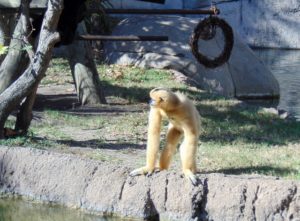
Continuing along the boardwalk around the building we saw Mandrills (Rafiki) and then an Orangutan laying in the sun.
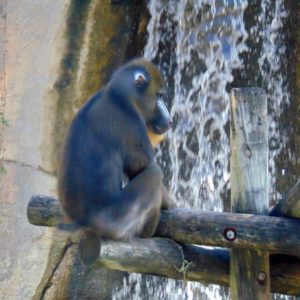
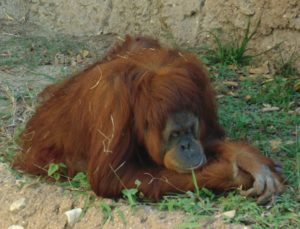
We followed the boardwalk around and then down a set of stairs. Turning right and following the sidewalk led us into the African Savanna area.
This incredible, immersive portion of the zoo is an amazing experience! A huge smile comes over my face as we enter a realistic African market. This area has a place to grab a snack and a souvenir shop. This village area really helps you feel like you are about to embark on an African safari!
As you leave the African market, you enter the amazing animal exhibits! The smile on my face gets even bigger because the first thing you see is the the best Giraffe habitat we have seen so far. This picturesque exhibit has waterfalls, safari jeeps, and a variety of animals. In addition to the Giraffes, this cohabitation exhibit has Kori Bustards, Pelicans, and Ostriches.
If you go to the right, you can purchase some lettuce to feed the Giraffes. We chose to go left (as usual).
We came to Steve’s favorite, the adorable Meerkats. They have a wonderful habitat with several large windows. These cuties were warming their bellies in the sun.
As you make your way through African Savanna exhibits, you walk through kjopes, or rocky outcroppings and grass thatched huts. This whole area really takes you on an African adventure, and we loved it!
Along the path you will encounter Black Rhinos, Hippopotamus, and some African Bird and Antelope species.
The African Savanna exhibit makes a large loop. As we made our way to the end of the loop, we passed the Giraffe feeding area where they were happily looking for lettuce leaves.
We reluctantly left the African Savanna area as we had the rest of the zoo to explore.
We entered the Asian Trails and came to the habitat of the Greater One-horned Rhino. The Rhino has a half barrel keg to play with and it is full of dents.
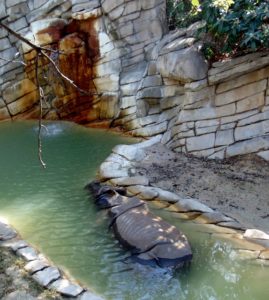
We then saw a Lowland Anoa, they are a kind of Asian Cattle, a mini water buffalo from Indonesia.
We then followed the path up and around to the Asian Falls. Here we see the best, most awesome Tiger habitats. They have Malayan Tigers and one of the tigers is white.
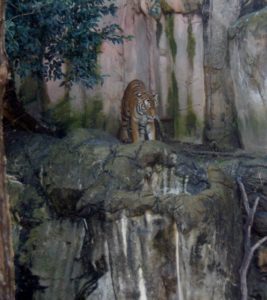
The white Tiger was catching some zzz’s while the other tiger was waiting for a mid-morning snack.
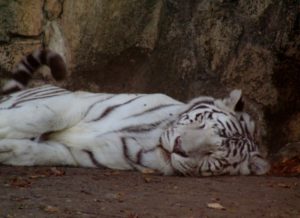
The Tiger habitat has multiple waterfalls, running streams, rock walls, massive trees, and 3 different levels the tiger can use. The zoo definitely used the elevation of the natural landscape to help build the tiger habitats.
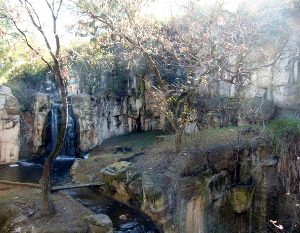
As we moved along we then entered the African Plains and Hoofstock exhibits. In this exhibit we saw an African Lioness watching the Grant’s Zebra. The 2 male African Lions were taking a cat nap (see what I did there).
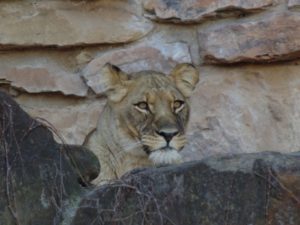

The next habitat we came to is the Springbok and Lesser Kudu.
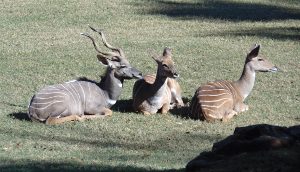
On the opposite side was a couple of Striped Hyena. This is the only zoo we have seen a Striped Hyena. The Striped Hyena is unique in that they don’t live in family groups, they are solitary or live with a mate.
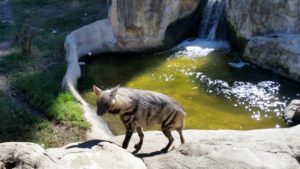
Then before we left the African Plains and Hoofstock we saw a Nubian Ibex. The habitat for this animal is pretty much a straight vertical rocky mountain.
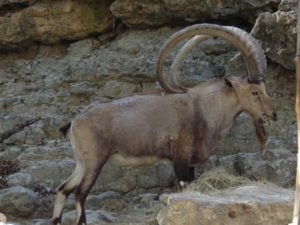
After you leave the African Plains and Hoofstock exhibit, you enter an awesome aviary called Raptor Canyon.
In here you can find Harpy Eagles, Andean Condors, and King Vultures. Vultures are my favorite. They help keep disease at bay by eating decaying animals. We kept following this path down seeing different birds along the way.
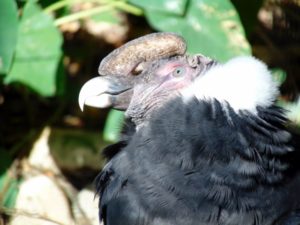
Then we came upon the Australian Outback. Go inside this building to see Fish and Sharks that are found on The Great Barrier Reef.
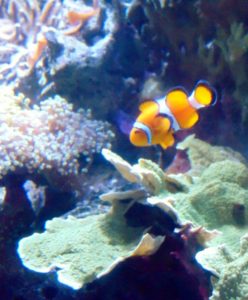
When you exit the building there is an Australian Turkey and on the other side are 2 cute Red Kangaroos.
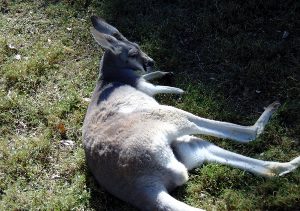
Leaving the Outback, your next stop is Penguins. Cold and Hot Penguins as Steve and I call them, referring to the type of climate they live.
Inside the building in a special made habitat are Rockhopper Penguins (cold) and outside are African Black-footed Penguins (hot).
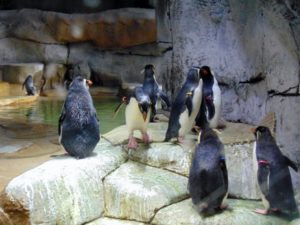
Inside the African Black-footed Penguin habitat was a duck. I guess he thought he was a penguin.
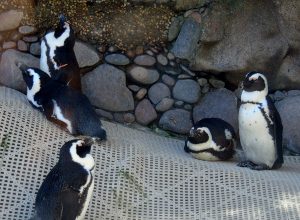
Then we took a nice little stroll to the Texas Hill Country and the old Texas western town.

Here in the western town you’ll find a petting zoo, glitter tattoos, a candy shop (homemade fudge), an Ice cream parlor, shooting arcade, General Store Gift Shop, Town Hall of Wonders, and concessions.
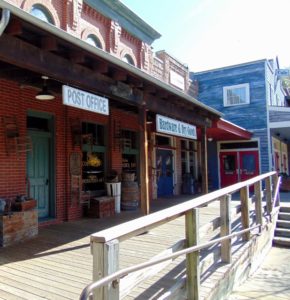
The concessions or food court has the options of Pizza Hut, Burgers, and Dickey’s BBQ.
Go for the BBQ, Steve had an amazing brisket (chopped) sandwich with a side of green beans. I had an awesome pulled pork sandwich with a side of baked beans. We shared a drink. They also have a pickle and onion bar, GREAT BBQ!
After our wonderful lunch we headed into the Texas Hill Country exhibits. We started with the High Plains and Prairies.
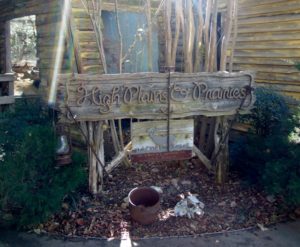
There is a house that looks like it has been hit by a tornado. Here we saw Swift Fox, Prairie Dogs, and Burrowing Owls.
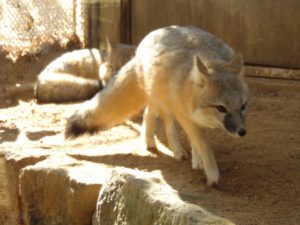
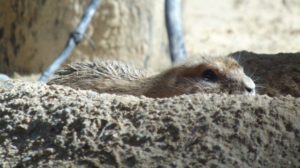
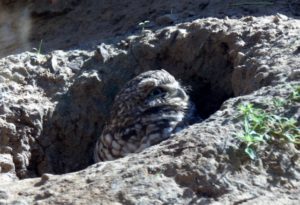
Behind the house were Wild Turkeys, Sandhill Cranes, and White-tail Deer.
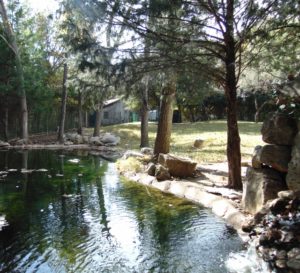
Across a small bridge and down a trail you come to a swinging rope bridge and enter the Piney Woods and Swamps.
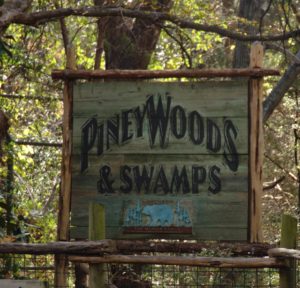
Here we encountered Red Wolf, American Alligator (big one), Alligator Snapping Turtle, North American River Otters, and American Black Bear.
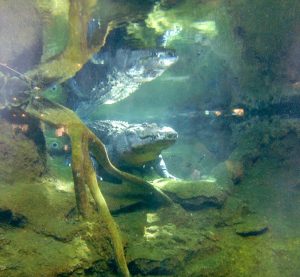
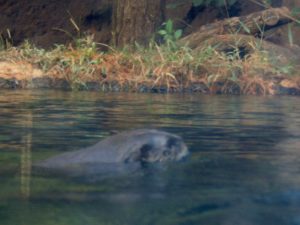
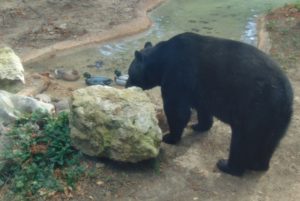
Next we traveled to the Texas Gulf Coast. Here we learned everything there is to know about The Gulf Coast.
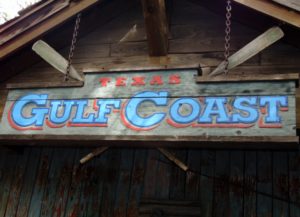
We also got to touch a Horseshoe Crab in the touch pool. Pretty cool. We exited the boathouse onto a dock with Pelicans and Roseate Spoonbills.
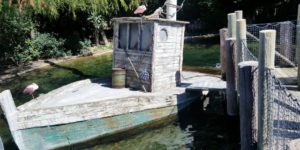
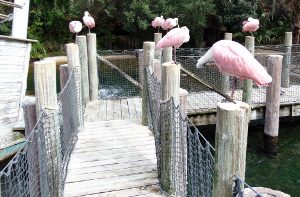
Next stop Texas Brush Country.
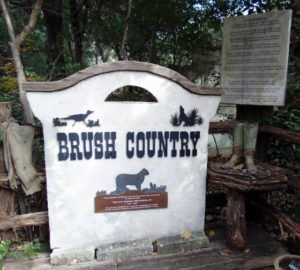
In Texas Brush Country species such as Bald Eagle, Mountain Lion (Cougar), White-nosed Coati, Ringtail Cat, Ocelot, Coyote, and Jaguar are found.
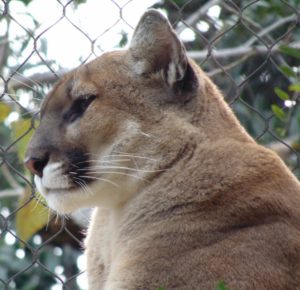
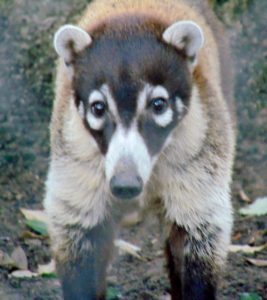
Studies have shown Ocelots and Jaguars, which were previously not found in Texas, are moving farther North due to human encroachment and habitat loss.
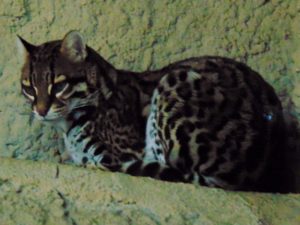
We entered the Texas Mountains and Deserts next. We went into what looked like an old mine shaft.
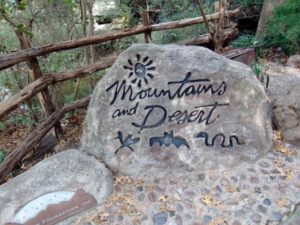
Here we got to see Western Diamondback Rattlesnakes, Mexican Long-nosed Bats, Texas Horned Lizards (Horny Toads), and a few other creepy crawlers.
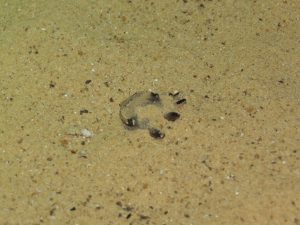
When we were finished exploring the Texas Mountains and Deserts we exited near the General Store Gift Shop.
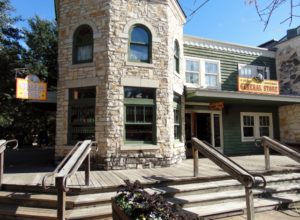
We said farewell to the old Texas town and walked back toward the zoos exit and said hello to MOLA.
MOLA stands for Museum of Living Art and is Fort Worth Zoos herpetarium. A model herpetarium, a true 5 paw herpetarium.

When you walk up to MOLA the first thing you see is the giant Saltwater Crocodile.
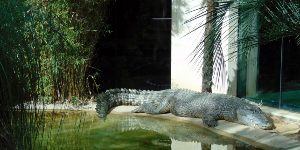
What is really neat is you can have lunch next to the giant Saltwater Crocodile and also next to Gharials.
Just like at Dallas Zoo where you can have lunch while watching the African Lions at Serengeti Grill, you can have lunch while watching the Crocodiles and Gharials. One wall of the restaurant has glass viewing into both habitats.
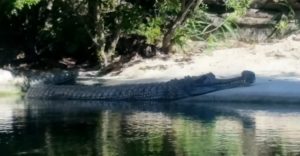
When the zoo designed MOLA they wanted to use colors and textures reminiscent of reptiles, fish, and amphibians. As you walk through MOLA you can see this on the walls, floors, ceilings, and in the lighting.
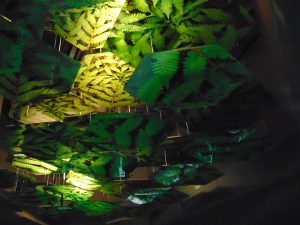
They have also used the different ecosystems around the world to group the animals together. The Flooded Forest and Life in the Tropics are 2 of the ecosystems in MOLA.
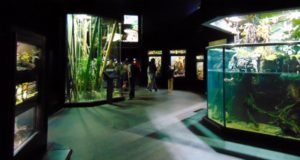
There are awesome, giant floor to ceiling terrariums and aquariums. They have species such as Komodo Dragons, Bushmasters, Freshwater Stingrays, and Red-tail Catfish.
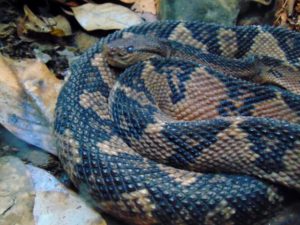
There is a room filled with visual, auditory, and kinetic education about all animals.
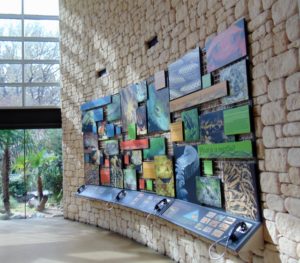
After you spend about an hour or so inside MOLA you exit and walk down the path that takes you back by the outdoor Western Lowland Gorilla habitat and Flamingos.
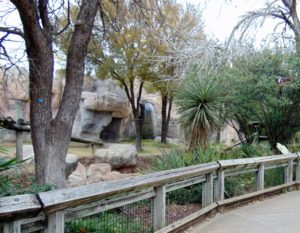
We exited the zoo and stopped by the Safari Gift Shop for our magnet.
Fort Worth Zoo is awesome. They are masters at using the natural topography to build habitats.
We are also super impressed with the zoos dedication to education. This is the 1st zoo we have given a 5 paw rating for education. We will definitely be back soon. They are planning on opening a new African Savanna, Spring 2018.
We will see you then!